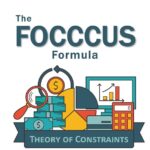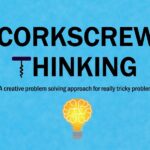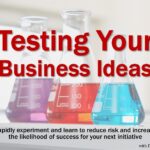MBA222: Testing Your Business Ideas
Description
David Bland discusses the importance of testing your business ideas and shares ways to dramatically reduce the risk and increase the likelihood of success for your product, initiative, or project.
Show Notes
Studies show that 7 out of 10 products fail to deliver on expectations. We often fall into the trap of moving forward with a project, product, or business idea without first validating it. This results in wasted time and money from solutions that don’t have a good market fit or aren’t solving the right problem.
<figure class="wp-block-pullquote">
</figure>The most expensive way to find out if you’re right or wrong is to build the whole thing.
David Bland
The Three Lenses
When testing your idea to reduce risk, look at the solution through three lenses; desirability, feasibility, and viability.
Desirability implies that customers want your solution. Feasibility means that we can build and support the solution. This is isn’t just technical feasibility; we also look need to look at overall regulatory, policy, and governance that would prevent you from making your solution a success.
While customers may want your solution (desirable) and you can build it (feasibility), perhaps there’s not enough of a market for it or people won’t pay enough for it. This is viability.
We want to unpack our risk and then test our way through it, going from no evidence to some evidence and then from some evidence to strong evidence that we’re on the right path.
Process to Validate Your Idea
If you have an idea that you want to validate, start by understanding the higher level risks. Who’s your customer? What’s your value proposition? What’s your revenue model and the cost it’s going to take to do this?
This information helps you map out desirability and viability. Then work to understand the big activities you need to do, the resources you need to have, and anything else related to feasibility.
A business model canvas may help you to understand the things that have to be true for your idea to succeed. From there, you can identify the things that have to be true that you have no evidence to support. You can then select experiments that would help generate evidence about those things.
Listen to the full episode to understand how to sequence your experiments, discover simple yet effective ways to test your business ideas before spending a lot of time and money, and more.
<figure class="wp-block-audio"></figure>
<figure class="wp-block-table is-style-stripes">
| YOUR HOMEWORK Quite often, the biggest risk is desirability. Look for observable evidence that there are more people than just you or friends or family that have the problem you’re trying to solve with your project or product. Learn firsthand whether or not there’s a market for what you want to do. Find out if it is a problem that’s big enough to actually build something for before you spend a lot of time and money. The observable evidence in this scenario would be people searching for something. Google could show search trend analysis could help show how big of a problem you’re solving. Are people searching for it regularly? Is it seasonal? How many people are searching for it? Was a search volume look like weather related terms or to specific regions in the world where it’s popular? |
Links Mentioned in This Episode
- David’s website DavidJBland.com
- Precoil – David’s company
- David’s Book – Testing Business Ideas
 </figure>
</figure>David J. Bland
David Bland is the founder of Precoil, an organization that helps companies find product market fit using lean startup, design thinking and business model innovation. David has helped validate new products and businesses at companies such as GE, Toyota, Adobe, HP, Behr and more.
David has also written several books and is the co-author of Testing Business Ideas: A Field Guide for Rapid Experimentation.













